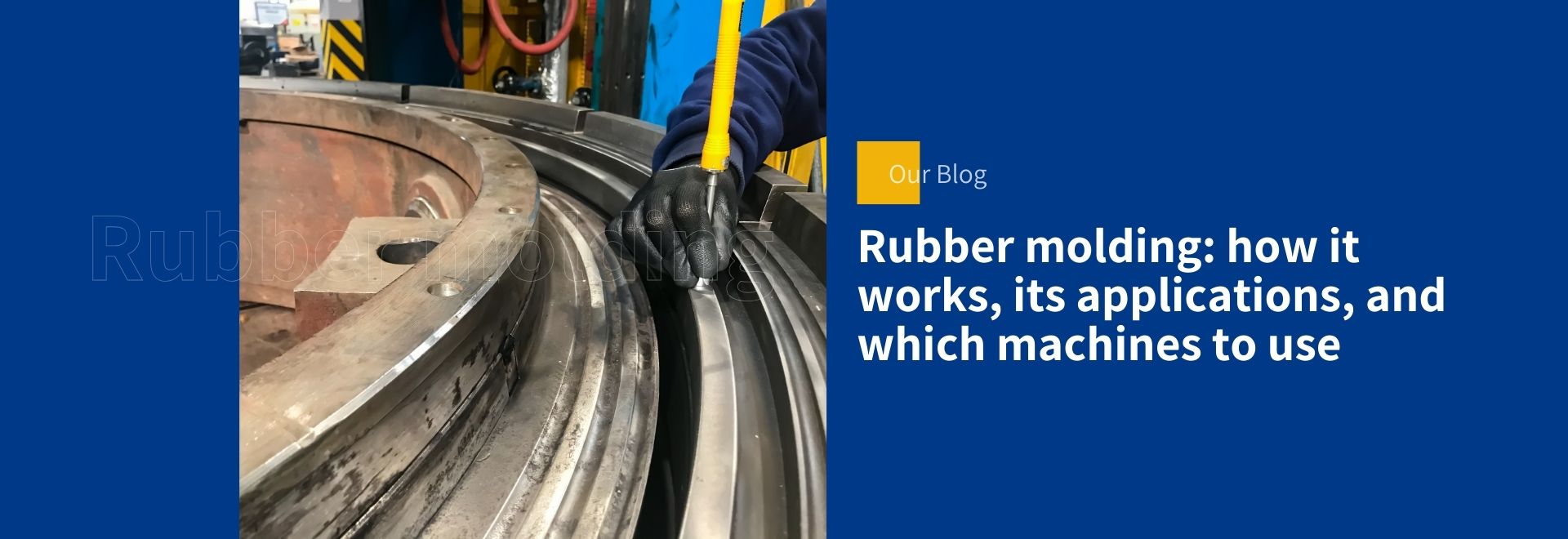
Rubber molding is a crucial process for manufacturing high-performance technical components used in strategic sectors such as automotive, medical, hydraulics, and general manufacturing industries.
Achieving reliable and repeatable results requires mastering the most effective processing techniques, selecting the right materials, and, above all, relying on high-performance machinery designed to ensure precision, efficiency, and productivity.
If you work in rubber processing, you know that every detail matters—from the mold to the temperature, from the molding cycle to the clamping force of the press. But how exactly does the process work? And what are the most suitable machines?
In this article, we’ll answer these and other questions, offering a complete and up-to-date overview of rubber molding and the technological solutions provided by Casati Macchine, a leader in the design and manufacture of rubber processing equipment.
Indice
- How does rubber molding work?
- What is rubber molding used for?
- Which machines are used for rubber molding?
- What does a rubber molding machine do?
- How Does the Rubber Molding Process Work?
How does rubber molding work?
Rubber molding involves transforming raw material—either natural or synthetic—into finished components with precise shapes and well-defined mechanical properties. This is achieved using specialized machinery that applies heat, pressure, and controlled vulcanization times, essential for ensuring the quality of the final product.
The rubber is loaded into a mold, typically made of steel, and subjected to thermal and mechanical cycles that enable vulcanization—the transformation into an elastic, resilient, and stable material.
The final shape depends on the mold’s precision and the consistency of processing parameters such as temperature, pressure, and holding time.
Every stage demands utmost attention: even minor variations can compromise the entire batch. That’s why the most competitive companies choose rubber molding machines equipped with advanced control systems and integrated automation, ensuring repeatability, efficiency, and reduced waste.
What is rubber molding used for?
Rubber molding serves to transform raw rubber into highly precise finished components capable of withstanding mechanical stress, thermal variations, chemical exposure, and challenging environments.
This process allows the creation of complex-shaped parts with high dimensional uniformity and specific functional characteristics such as elasticity, sealing, wear resistance, and insulation.
Applications are vast and varied:
- Automotive: Silent blocks, engine gaskets, anti-vibration mounts.
- Hydraulics and pneumatics: Seals, diaphragms, fittings.
- Medical: Stoppers, valves, fluid-contact components.
- Food industry: Certified seals for food contact.
- General industry: Protective covers, insulators, sealing rings.
The effectiveness of rubber molding lies in its ability to ensure high-quality standards even for large production volumes while maintaining competitive production times.
Which machines are used for rubber molding?
In the rubber molding process, choosing the right machine plays a key role in ensuring precision, reliability, and production continuity.
Depending on the complexity of the component, the material used, and production volumes, different types of presses can be employed:
- Compression presses: The most traditional type, still widely used today. Ideal for medium to large production volumes, offering robustness and operational simplicity—perfect for parts with simple geometries and high mechanical strength requirements.
- Injection presses: The most advanced solution, particularly suited for automated production cycles, complex parts, and technical materials. They offer better process control, reduced cycle times, and high repeatability even on large batches.
- Transfer presses: A hybrid system combining the advantages of compression and injection molding. Ideal for components requiring precise mold filling without compromising internal structure.
Today, leading companies choose machinery integrated with Industry 4.0 technologies, capable of real-time production monitoring, energy efficiency optimization, and full batch traceability.
What does a rubber molding machine do?
The rubber molding machine is the heart of the entire production process. Its role is to transform raw rubber into a finished part that meets the required dimensional and functional specifications through a precise sequence of highly reliable operations.
Specifically, a molding machine:
- Manages the material heating process at controlled temperatures to activate vulcanization
- Applies the necessary pressure to perfectly shape the rubber within the mold
- Monitors and maintains critical parameters such as time, temperature, and clamping force
- Ensures uniformity and repeatability from one cycle to the next, even at high production volumes
- Often integrates automation and part unloading systems, minimizing operator intervention and speeding up production
The most advanced solutions feature intuitive digital interfaces, real-time data management, and connectivity with MES systems, making them an integral part of a modern, connected production line.
What does the rubber molding process work?
Rubber molding is based on a simple principle but requires great precision, tight parameter control, and deep material knowledge.
The goal is to transform raw rubber into a finished product by modifying its molecular structure to give it elasticity, strength, and durability.
The production cycle involves five key stages:
- Loading: The rubber is measured and placed into the mold, either manually or via automated systems.
- Mold closing: The machine applies a calibrated clamping force to prevent material loss and deformation.
- Heating and vulcanization: The material is heated to a set temperature (typically between 140°C and 200°C), initiating the chemical reaction that transforms the rubber into an elastic, stable structure.
- Holding: Temperature and pressure are maintained for a precise time to ensure complete polymer cross-linking.
- Opening and cooling: The part is removed from the mold, cooled, and made ready for further processing if needed.
The real challenge lies in achieving process repeatability, minimizing waste, and optimizing cycle times.
Therefore, it’s essential to have technologically advanced machinery capable of maintaining all critical variables consistently.
Rubber molding is not just a technical process; it is a critical hub of industrial production where product quality, production line efficiency, and company competitiveness are at stake.
Investing in the right machinery means boosting productivity, reducing waste, enhancing precision, and automating each phase with maximum reliability. In a constantly evolving market, choosing the right technology can make the difference between falling behind and leading innovation.
At Casati Macchine, we design and manufacture tailor-made molding solutions for every production need, supporting companies with expertise, experience, and top-level technical service.


